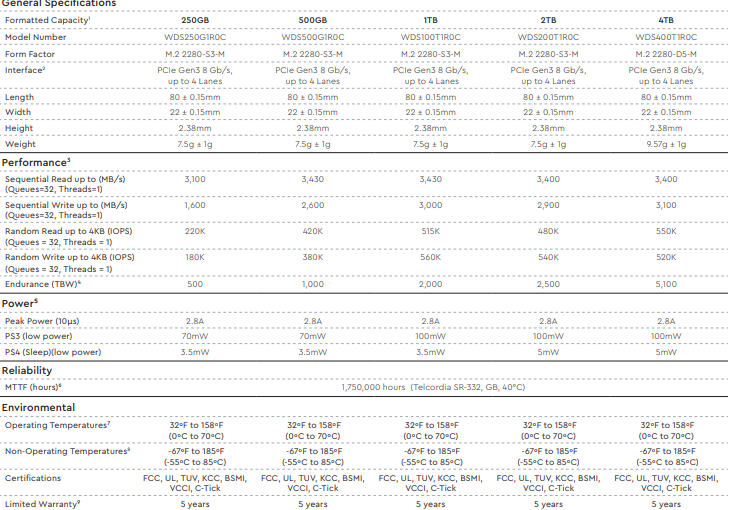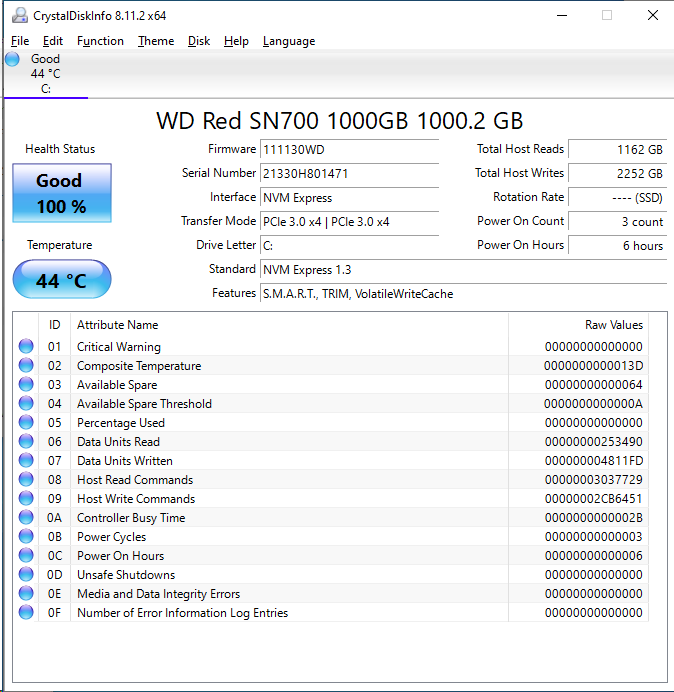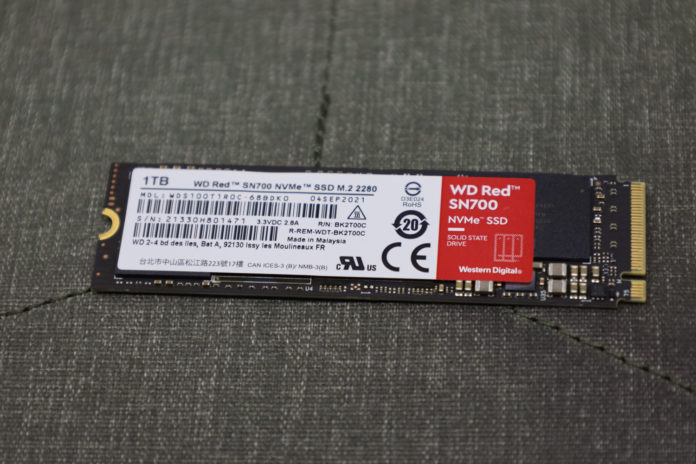Today we are taking a look at the WD Red SN700 1TB NVMe SSD. This is the successor to the WD Red SA500 that we previously reviewed, offering significantly better performance via use of NVMe rather than SATA connectivity. Back when I originally looked at the SA500, I came away generally underwhelmed by both the feature-set and performance of that drive. As a result I am crossing my fingers that WD has improved their Red SSD, so let us get to the testing and find out.
WD Red SN700 1TB NVMe SSD
The WD Red SN700 1TB comes in a single-sided M.2 2280 (80mm) form factor.

The top of the drive is home to all components. The NAND and the controller chip are both manufactured in-house by SanDisk/WD, and additionally, a DRAM cache is also present. The NAND type is not specified by WD but is presumed to be TLC.

Being single-sided, there is nothing on the bottom of the drive. Despite this drive being targeted at NAS devices for array cache purposes, there is no physical power loss protection (PLP) circuitry present on the drive.
WD Red SN700 Specs
The WD Red SN700 line of SSDs is available at capacities ranging from 250GB to 4TB. Here are the specs:

Our review unit is the 1TB model, and by the spec sheet should offer decent performance for a PCIe 3.0 drive. Endurance was an area where I felt the SA500 was lacking previously, since despite its price premium and target market as a cache drive the SA500 did not offer rated endurance numbers significantly higher than commodity consumer SSDs. This is one area where the SN700 shows large improvement over its predecessor drive with 3.3X the rated endurance at the same 1TB capacity point. Performance specifications are also similarly improved thanks to the move to NVMe/PCIe 3.0; the SA500 rated performance was not top tier even among SATA SSDs of the day, while the SN700 is closer to a high end PCIe 3.0 drive at 3430 MB/s sequential read and 3000 MB/s sequential write. WD is still taking something of a conservative approach in their Red line SSDs and not offering PCIe 4.0 connectivity, but that is somewhat to be expected given that most small NAS devices currently do not support PCIe 4.0. Rounding out the performance and durability specs is a 5-year warranty.

CrystalDiskInfo can give us some basic information about the SSD, and confirms we are operating at PCIe 3.0 x4 speeds using NVMe 1.3.
Test System Configuration
We are using the following configuration for this test:
- Motherboard: ASUS PRIME X570-P
- CPU: AMD Ryzen 9 5900X (12C/24T)
- RAM: 2x 16GB DDR4-3200 UDIMMs
Our testing uses the WD Red SN700 1TB as the boot drive for the system, installed in the M.2_1 slot on the motherboard. The drive is filled to 85% capacity with data and then some is deleted, leaving around 60% used space on the volume.
Next, we are going to get into our performance testing.




How about testing SSD @STH with fio@linux?
Windows could be to slow for modern SSDs, and nobody needs the fastest SSDs with windows.
Very interesting product.
but MAN that runs hot. and it only lists 70C as the max operating temp on the data sheet. That’s worrisome, especially if it’s in a cramped NAS.
I paid same amount of a regular pcie 3.0 on a PNY XLR8 CS3040 which is pcie 4.0.
The write and read speeds I got to reach 3500MB each on benchmark.
My system is an i5 8600k with z370i asus strix, which is pcie 3.0. The results are amazing for the price. I paid R$1490,00 on the cs3040 2tb version.